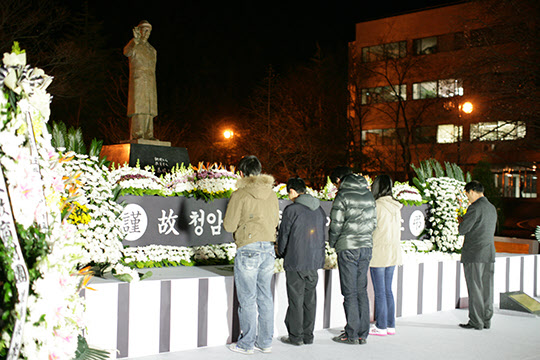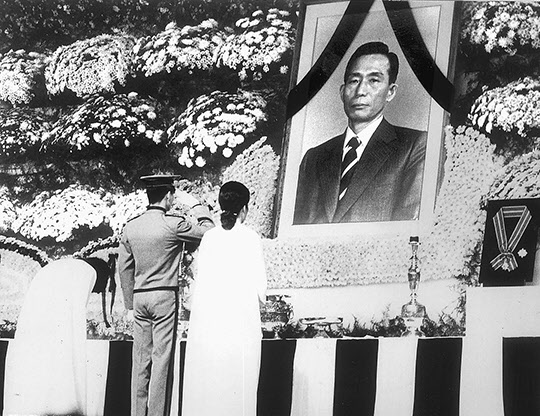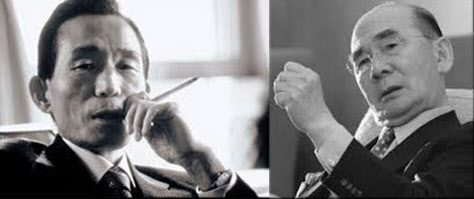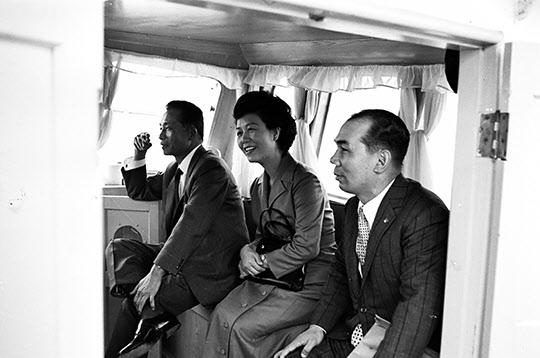Julian Fantino씨의 살아온 삶에 대한 얘기를 들은 기억이 있다. 10세때 이태리에서 부모님 따라 캐나다로 이민와서, 경찰 총수(런던지역에서 토론토지역)를 하면서 인기를 많이 얻었었고,그후에는 온타리오 경찰총수직을 2006-2010까지 했었다.
퇴임후에는 보수당에 뛰어들어 2010-2015년까지 연방의원을 하면서, 은퇴자 노인들을 돌보는 Minister of state for Seniors과 그외 여러장관직을 지냈었다. 2013-2015까지 재향군인장관직을 맡아 근무하면서는 인기를 잃기도 하고, 그다음 선거에서 패배의 쓴잔을 마셨었다.
이민자로서의 성공 스토리의 주인공이 되기도 했었다. 그래서 인기를 더 많이 얻었었는데, 특히 경찰총수 당시에는 대마초 복용근절을 위해 많은 성원을 얻기도 했었는데, 정치꾼으로 옷을 바꾸어 입으면서 그의 신념을 180도 바꾸는 오염된 인물이 되고 말았다.

2015년 그가 재향군인담당 장관으로 재직할때, 재향군인회원들이 많은 신체적 고통을 받는것을 보면서, 대마초를 조건을 걸어, 합법화 해야 한다는 생각을 갖게 됐다고 실토했다. 정치꾼이 되면서 그의 신념이 유권자의 표의식을 염두에 둔 제스쳐였는데, 앞으로 두고 볼일이다.
대마초 애용을 주장하기로 유명한 Dana Larsen씨는 주장하기를, Fantino씨가 대마초 시장에 뛰어 들기로 결정한것은, 정말로 "유치하고 절대로 용납안돼는 추잡한 행동이다"라고 독설을 퍼부어 대고 있다. 그의 후임자 토론토 경찰총수를 지냈고 은퇴후 자유당에 뛰어들어 현재 Scarborough 지역에서 연방의원직을 하고있는 Bill Blair씨역시 방법은 다르지만, 대마초 합법화 지지로 정치꾼으로서의 변절된 모습을 보여주고 있어 실망이다.
지금 캐나다의 많은 젊은이들은 물론이고, 기성세대들도 많이 그동안 마약으로 취급되여온 대마초를 숨어서, 피우곤 했는데, 이제는 마음놓고 상점에 가서 구입할수 있어, 커가는 어린 아이들을 양육하고 있는 부모들의 마음은 더 무겁고, 두려워 질것 같다. 왜 마약을 합법화 시켜야 하는지, 그 당위성을 이해할수없다.
그렇치 않아도 청소년들 사이에서는 마약때문에 부모들 고통이 무척 커지고, 심한 경우에는 집안에 풍파가
발생하고 가정이 깨지는 경우까지도 있다. 마약 단속은 국가에서 책임지고 지속적으로 시행해서, 주고 사춘기 어린생명들을 보호해도 모자랄판인데, 그위에 대마초까지 합법화 시킨 연방 자유당 정부의 정책으로 청소년들은 그유혹에 더 쉽게 빠지게 됨으로 사회는 더 불안해지게됐다.
의학용을 사용하게해서 치료를 한다고 하는데..... 그말을 믿을 사람은, 대마초를 합법화 시키는데 동조하는 마약중독자들 외에는 없을 것이다.
그래서 많은 유권자들이 General Election이 Call 됐을때 냉소를 던지는 이유중의 하나인것 같다. BBC 의 비꼬는듯한 내용의 아래의 기사를 읽어 보자.
As Canada moves towards legalising recreational cannabis, there's a surprising group of entrepreneurs jumping into the market: cops and politicians.
In 2015, former Toronto police chief Julian Fantino was "completely opposed" to marijuana legalisation and supported mandatory jail time for minor cannabis offences.
Mr Fantino, who was also a Cabinet minister in the former Conservative government, criticised the now governing-Liberals' plan to legalise the drug, saying it would make smoking marijuana "a normal, everyday activity for Canadians".
In November, along with former RCMP deputy commissioner Raf Souccar, he opened Aleafia, a "health network" that helps patients access medical cannabis.
Mr Fantino said his turning point on medical marijuana came when he was minister of veterans affairs and met ex-soldiers who relied on it.
Marijuana activists who have fought against prohibition for decades - and sometimes faced subsequent criminal charges for their activities - were angry over Mr Fantino's reversal on pot.
Prominent cannabis advocate Dana Larsen called Mr Fantino's decision to enter the market "shameful" and "unacceptable".
"I would not buy from those people," he says, adding he would tell other marijuana users to do the same.
Mr Fantino is arguably among the more controversial entrepreneurs to join the "green rush".
But a number of high-profile former police officers and politicians have jumped into the industry in recent years, including Mr Fantino's Aleafia colleague and fellow ex-MP Gary Goodyear, former Ontario premier Ernie Eves and former deputy Toronto police chief Kim Derry.
Medical cannabis has been legal in Canada since 2001.
The industry got a boost in 2013 when federal government regulations shifted to allow licensed commercial producers to grow, package and distribute medicinal cannabis to patients.
Registered patients have also skyrocketed from 24,000 in June 2015 to more than 200,000 in June 2017.
Many of companies supplying that market have plans to expand into the recreational product when the product is legal next summer.
In December, the federal statistics agency estimated Canadians consumed an estimated C$5bn ($3.8bn; £2.9bn) to C$6.2bn worth of marijuana in 2015. Canadians spend about C$7bn a year on wine.
Derek Ogden spent more than 25 years with the Royal Canadian Mounted Police, including as head of the force's drug squad.
He understands the frustration of activist watching the people they battled for decades now entering the industry.
"There's absolutely no way Canada would be in this position right now as far as taking steps to legalise had it not been for the work that the activists did," he says.
But Mr Ogden, who now runs National Access Cannabis, a consultancy that helps patients access medical marijuana, says it's no surprise that ex-cops are in demand.
Licensed producers are hungry for people with security experience who can get clearances and who understand Canadian drug laws.
"One of the ideal groups of candidates to slide into those positions were former law enforcement personnel," he says.
Mr Ogden himself got into the business around 2014, when Canadian and American producers hired him to consult on security protocols.
His nascent consulting company was "overwhelmed" by the demand.
Mr Ogden no longer believes that people who use medicinal cannabis are simply doing so "to avoid the legal implications" of using the drug recreationally.
He had an "aha moment" after meeting a respected physician who relied on cannabis during a bout with cancer. Mr Ogden now uses it himself for a chronic health issue.
He concedes changing his mind on its recreational use was "a tougher one".
Former British Columbia municipal politician Barinder Rasode "grew up thinking [pot] was a gateway drug that ruined people's lives".
Now she's president of the new National Institute for Cannabis Health and Education, which researches cannabis production and its use in Canada.
Marijuana activists have done "an amazing job" at highlighting problems with prohibition but with legalisation on the horizon, "having many voices at the table is really, really important", she says.
"I don't think the fact that somebody at some point had a different opinion about cannabis should exclude them," she adds.
"I actually think their voices are extremely valuable."
Marijuana is the most commonly used illegal drug in Canada. Almost 60% of drug offences in the country in 2016 were cannabis-related.
Mr Larsen says he doesn't "want to put narcs in jail". But he believes police and politicians who supported prohibition and are now entering the cannabis business should admit they were wrong.
"I want people who were victimised by cannabis prohibition - who went to jail, who had their families torn apart, who lost their children, who couldn't access medical cannabis - I want their voices to be heard," he said.
http://www.bbc.com/news/world-us-canada-42285743?intlink_from_url=http://www.bbc.com/news/topics/cywd23g0q41t/canada&link_location=live-reporting-story


























